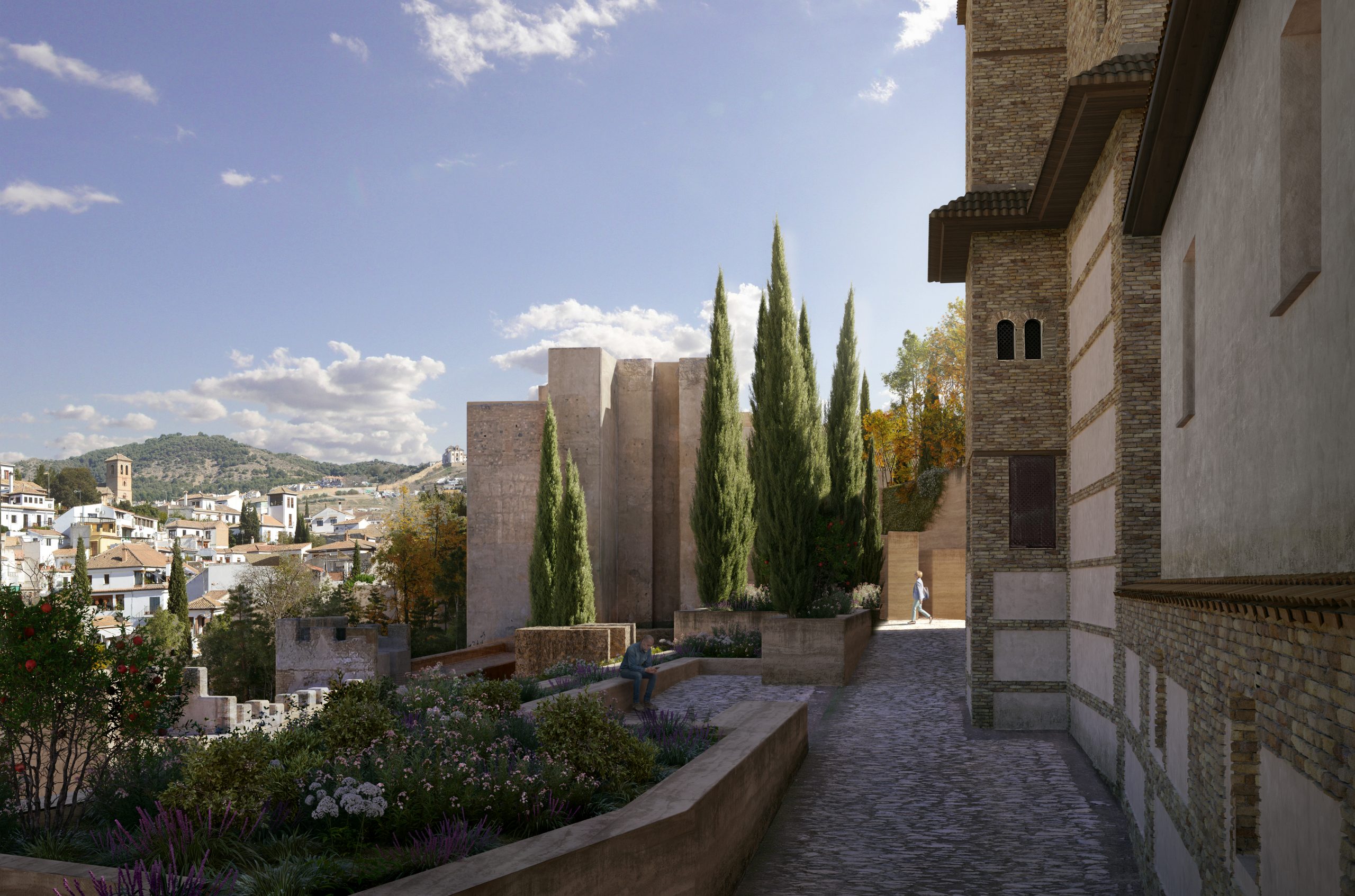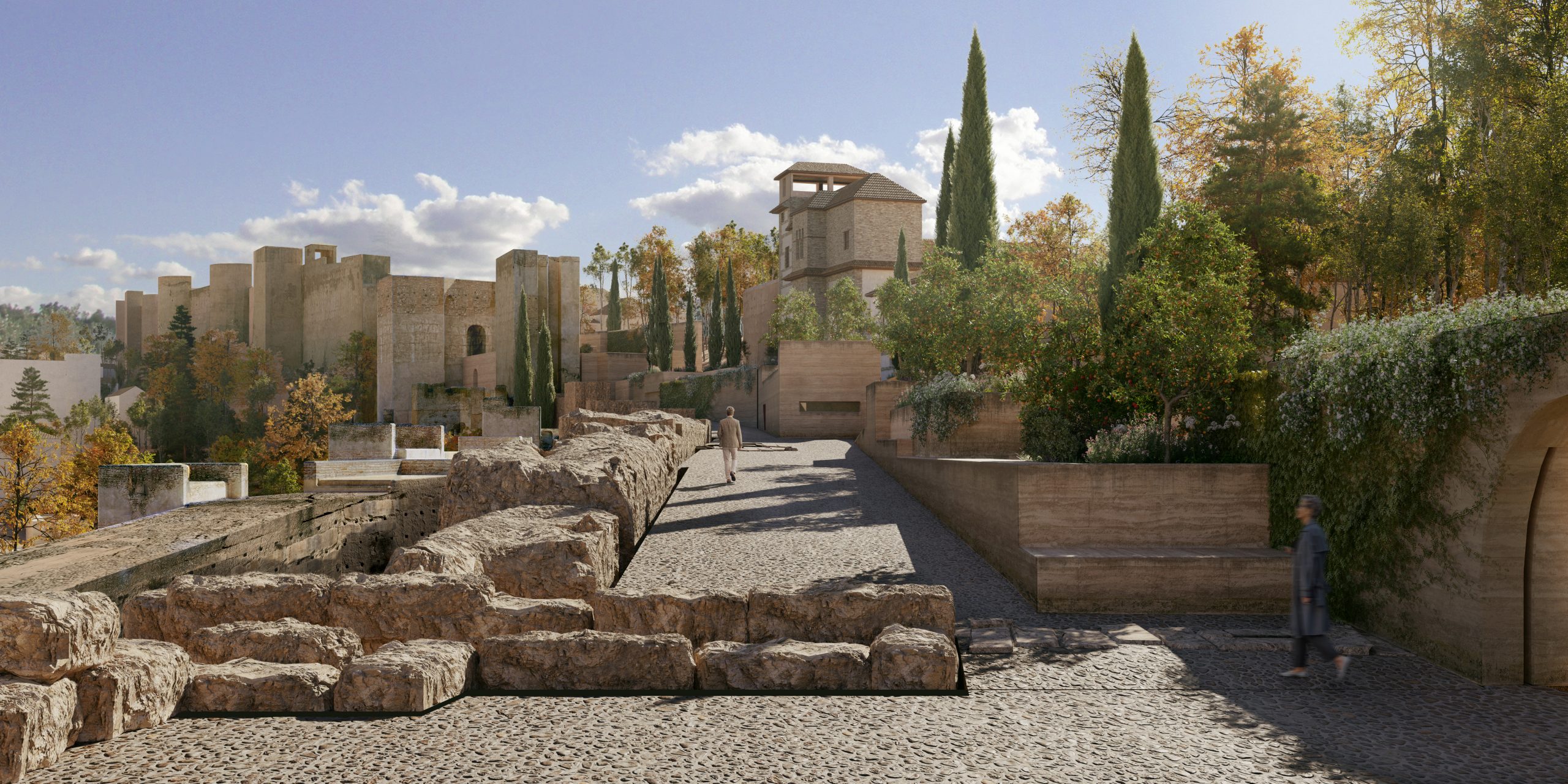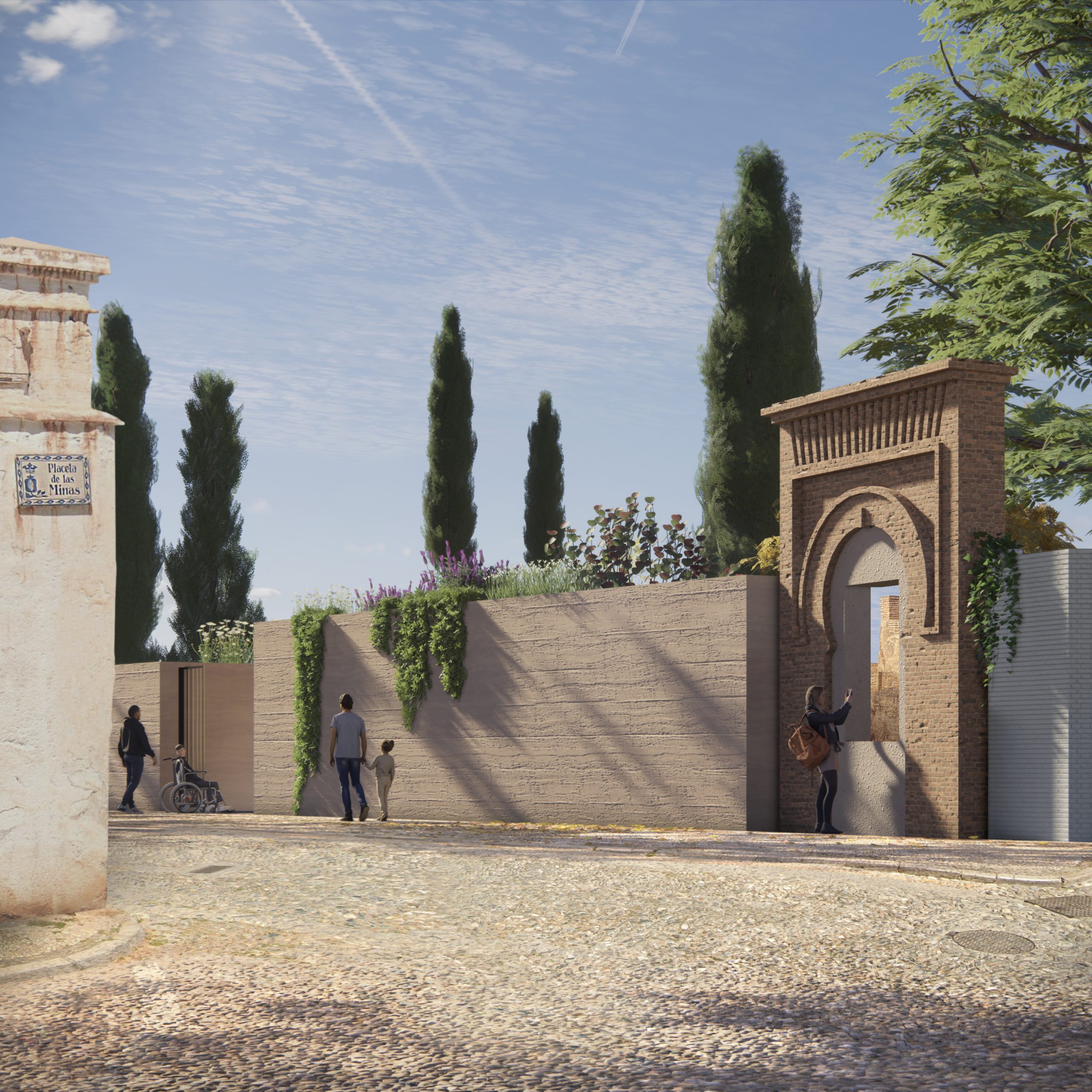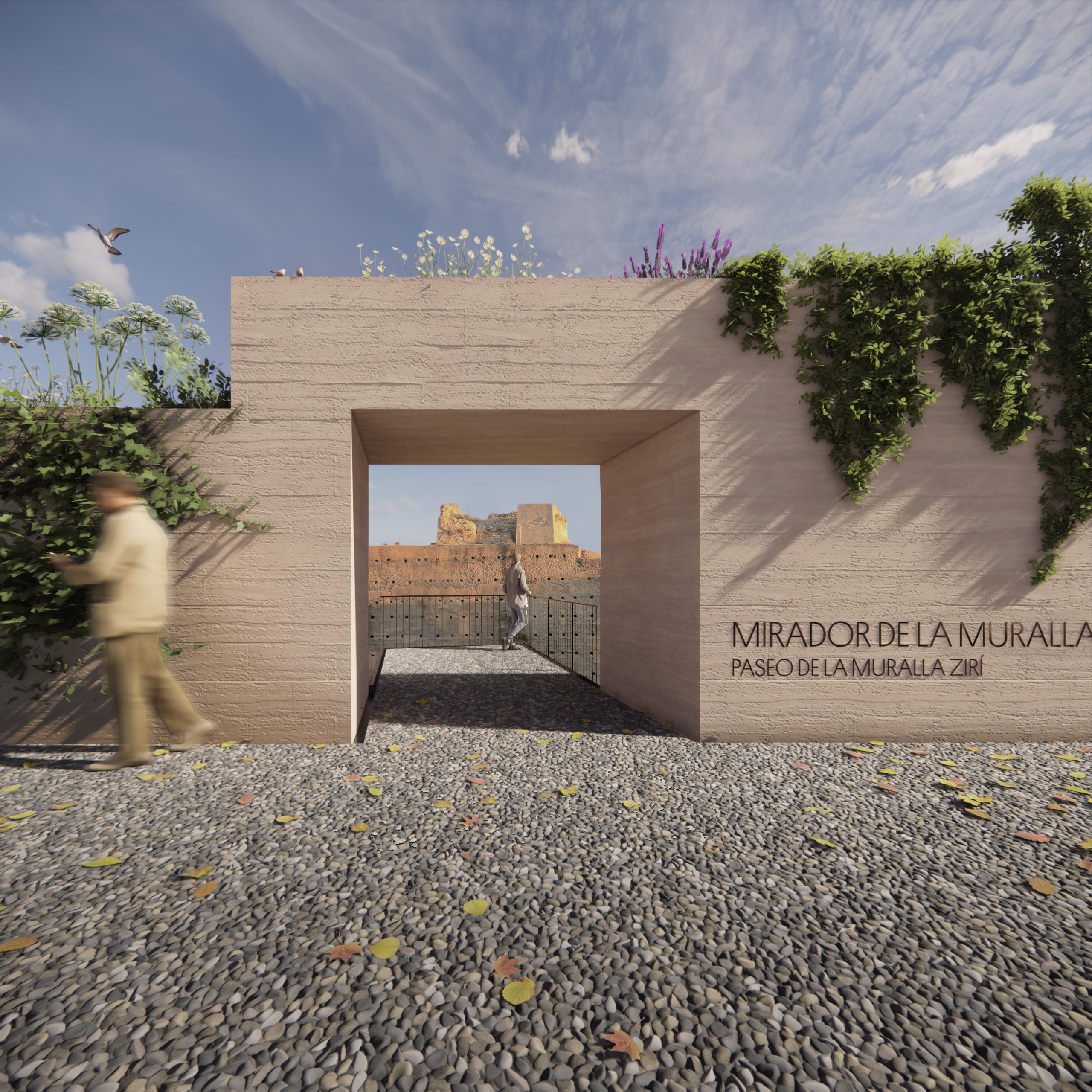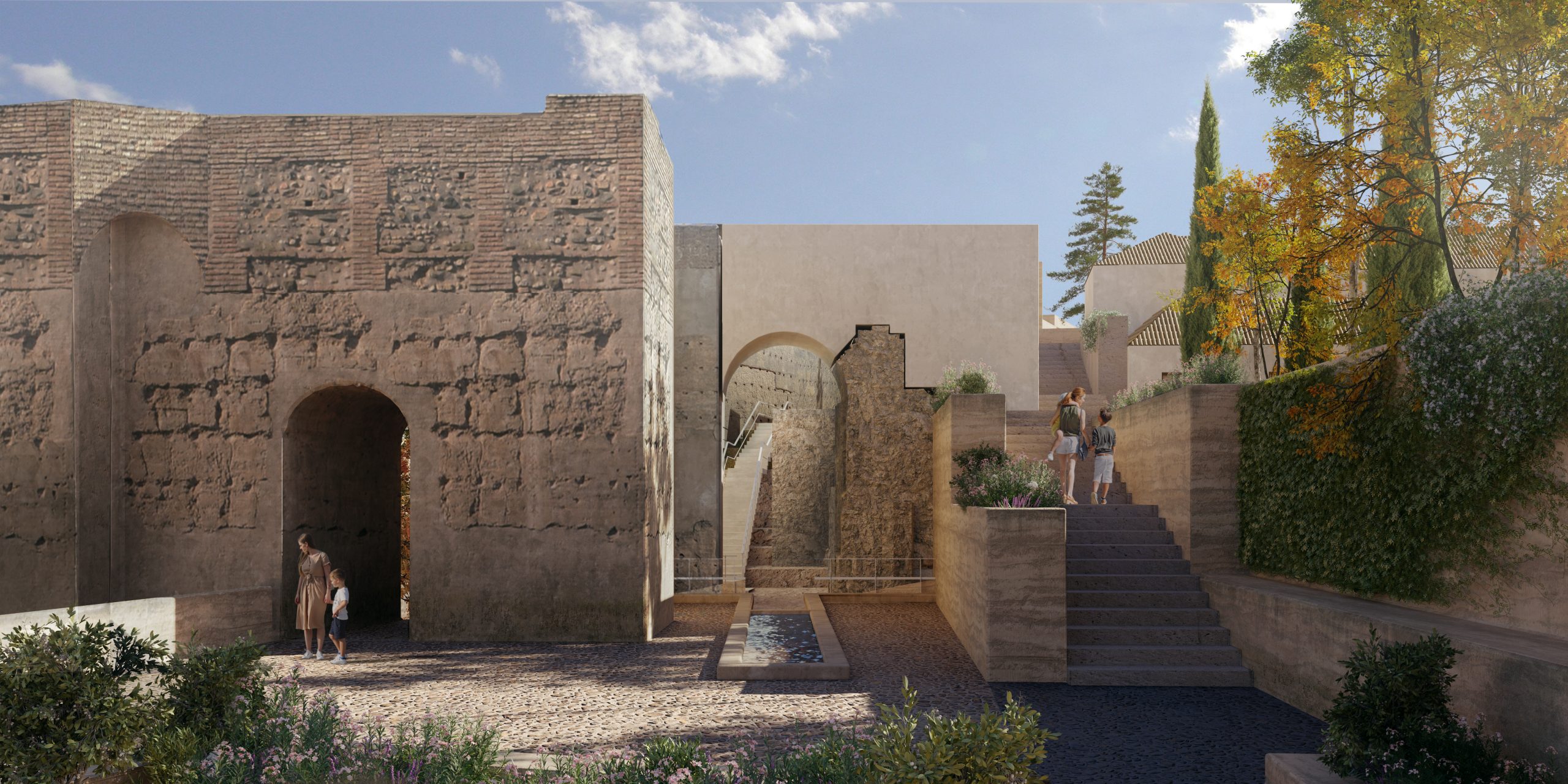Year of construction: –
Year of project: 2024
State: Competition. 1st Prize
Location: Cárcel Baja street, 3, Albaicín, 18001 Granada
Promoter: Ayuntamiento de Granada
Architect: Pablo M. Millán Millán; Alejandro Infantes and Javier Muñoz Godino (Estudio Veintidós)
Contributors: Cristian Castela González (Architect); David Vera García (Architect); Javier Serrano Terrones (Technical Architect); Gabriele Giunchiglia (Architect); Germano La Monaca (Architect); Carlotta Riva (Architect)
Builder: –
“En la cima de la alta colina del Albaicín, la parte más elevada de Granada, que se alza desde el estrecho valle del Darro, enfrente mismo de la Alhambra, se encuentra todo cuanto queda de lo que un día fue palacio real de los árabes.”
Washington Irving, Cuentos de la Alhambra (1832)
“Tierra tan sólo. Tierra.
Es la tierra alegrísima, imperturbable nadadora,
la que yo encuentro en el niño y en las criaturas que pasan los arcos.
Viva tierra de mi pulso y del baile de los helechos […]”
Federico García Lorca, Tierra y Luna (1935)
The Zirí wall of the Albaicín composes a palimpsest of diverse archaeologies that overlap and intermingle hidden among changing topographies. A place that accumulates vestiges of diachronic elements such as medieval defensive systems, Renaissance and nineteenth-century domestic architecture, supply and irrigation infrastructure and even palatial constructions. This uncertain environment is a large canvas redrawn over and over again, in which some traces persist, and others are dragged and erased by time.
The creation of a linear walk represents the opening of the Zirí wall area to the Albaicín neighborhood and is based on urban continuity as the main premise, in order to recompose the relationships between this area and its surroundings without the introduction of exogenous elements that adulterate the character of the place. In archaeology, an earthwork, earthwork or earthwork is a general term to describe artificial changes in topography and may themselves be archaeological sites. It is proposed to build a new landscape of land and memory in which the strata and fillings that hide the original constructions of this place are moved and stored in thick garden walls concreted with lime that allow fragments of its history to be recounted, revealing missing traces and resolving the connection of the new promenade with the city. This limit of earth and mixture is heir to the rammed earth walls and the historical wall that has hidden the complex, although, unlike their rigidity, it records and includes the memory of the elements that have configured this space: the wall, the pools, a large tree, the ruin, a sunken arch, the road, doors of old disappeared cármenes, the bend, the distant look, the ascent, the aroma.

